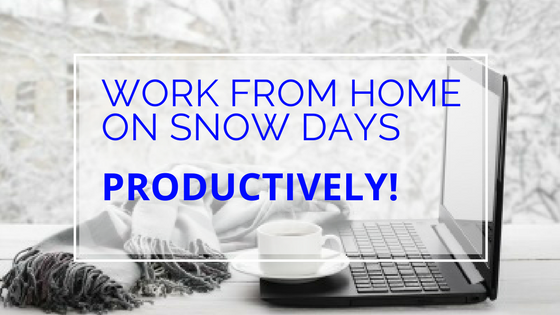
Turning Goals into Reality
An unrealized goal is nothing more than a dream. It’s your choice:
Keep it a fantasy or work towards attaining your goal.
Dreams Can and Do Come True When:
- Desire is strong enough and not in conflict with your basic life values
- Goals are clearly defined and at least partially grounded in reality
- Planning is realistic, taking your resources and motivation into account
- Effort is real, as is your belief that you can do it, so ‘I want’ becomes ‘I will!’
We all talk about making positive changes, and that’s great. But ask yourself how often those changes actually happen. Good intentions aren’t enough — you need a plan, and it has to be one that fits with your life. So set yourself up for success by following these Eight Steps to Turn Your Goals into Reality!
 Set a realistic Long-Term Goal. This is a goal that is meaningful, but not necessarily easy. It will take work, and time, to accomplish, but it is do-able.
Set a realistic Long-Term Goal. This is a goal that is meaningful, but not necessarily easy. It will take work, and time, to accomplish, but it is do-able.
You may want to be rich, and you might get there (if you’re not already). That could be your long-term goal, but it would be easier to work towards a goal that seems more attainable, even given your current circumstances. Link your goal with a positive, emotionally motivating benefit. State it as a desire, then remove the possibility of failure and state it as a fact. Here’s an example:
“I want to be more financially secure. I will be financially secure.”
 Establish one Interim Goal.What is one thing you can do that will contribute towards the success of your long-term goal? Buying lottery tickets is one option, but the odds of success are minimal. A better goal:
Establish one Interim Goal.What is one thing you can do that will contribute towards the success of your long-term goal? Buying lottery tickets is one option, but the odds of success are minimal. A better goal:
“I want to/I will manage my money better so I’ll have more of it.”
 Consider what gets in the way.Examine your life and be honest with yourself as you ask, “Whatissues in my life are making it difficult to achieve this goal?”
Consider what gets in the way.Examine your life and be honest with yourself as you ask, “Whatissues in my life are making it difficult to achieve this goal?”
My expenses are very high… My income is too low… I already owe on credit cards and back taxes… I don’t spend enough time on financial matters (it’s easier for me to ignore things and hope they work out)…
 Isolate specific actions that you can change (now or in the near future). This is where you explore anything that you can do or change to help attain your goal. Here are some options for better money management:
Isolate specific actions that you can change (now or in the near future). This is where you explore anything that you can do or change to help attain your goal. Here are some options for better money management:
I can stop eating out almost every night… I can plan my wardrobe better and buy during sales… I can move to a less expensive apartment… I can look for a better job… I can pay my bills on time and avoid late fees and interest… I can pull my paperwork together and file past taxes to minimize penalties… I can renegotiate my mortgage… I can get a better handle on where I spend money… I can create a budget that includes regular savings…
 Justify (buy-into) each option, or table It as unlikely to work.Ask yourself what are the benefits of making a specific change. Put it in writing. As an example, here are reasons to support the specific action of not eating out every night:
Justify (buy-into) each option, or table It as unlikely to work.Ask yourself what are the benefits of making a specific change. Put it in writing. As an example, here are reasons to support the specific action of not eating out every night:
Eating out every night is expensive… It loses the “fun factor” and is time consuming, so I have less time for other interests… It promotes drinking, which is a problem and additional expense… I spend more on gas or car service… It is more difficult to eat healthy when I have all of those menu options in front of me…
 Examine the down side of change, isolate potential problems and explore creative solutions.Don’t just ignore the possible pitfalls, or your plans to change won’t last very long. Continuing the ‘eating out less’ example:
Examine the down side of change, isolate potential problems and explore creative solutions.Don’t just ignore the possible pitfalls, or your plans to change won’t last very long. Continuing the ‘eating out less’ example:
Problem: Eating out is my main socialactivity.I don’t want to give this up!
Solution:I’ll eat out on Fridays and Saturdays, and really plan and enjoy this.
Note: Give yourself permission to act with forethought and moderation, rather than overreact by completely eliminating eating out.
Problem:I never have anything good to eat in the house.
Solution: I’ll use an app to set up a simple meal plan and block in time for a weekly shopping expedition — especially for foods I like… or I can shop online and have the food delivered.
Problem: I hate to cook and don’t want to spend my time in the kitchen!
Solution: I’ll check out services that prepare and deliver meals for a week. It’s probably still less expensive than always eating out — and healthier!
 Take steps to make these changes happen! Ask yourself: What can I realistically do to solve this problem? List each specific action you are willing to do in order to make your new plan work. Turn your project into do-able tasks.
Take steps to make these changes happen! Ask yourself: What can I realistically do to solve this problem? List each specific action you are willing to do in order to make your new plan work. Turn your project into do-able tasks.
How and when will I do it? Assign a specific time to each action, and schedule it on your calendar as a Task-Appointment. Without an assigned task and time, it is likely to remain a fantasy! So if you plan to eat out only on Fridays and Saturdays, schedule a time to confirm with friends or family in advance… make restaurant reservations, if necessary… download coupons or Groupons to save even more…
How can I make this easier/self-motivate? What can you do that will make staying with your plan easier?
Build in immediate rewards:
- Combine your grocery-buying with a special event (getting a massage, meeting a friend for coffee, etc.)
- Link it to something you already do each week.“After yoga class on Wednesdays I pass by Whole Foods, so I’ll go food shopping.”
- Associate doing it with giving yourself permission to spend time on something else,guilt-free.“I’ll shop after work every Tuesday, have fresh store-made BBQ chicken for dinner then spend the evening catching up on my favorite TV shows.”
- Create a ‘fun factor’: “I’ll invite a friend over on Sunday and we’ll both prepare meals for the week”… “My partner and I will have a mini-date night making dinner together”… “I’ll take a cooking class at the Y”…
- Reinforce your goal: Bank the money you’ll save by not eating out, and use the time you’llgain to join a book club, paint, play guitar, or do whatever brings you joy!
Build in reminders:
- Visual: Have a photo that represents your long-term goal as a screen-saver.
- Physical: Keep a money jar to represent your savings (dimes instead of dollars?)
- Emotional: Post an attractive affirmation of the benefits you will get from your actions… Mention that ego-boosting self-respect you’ll get from working towards something that is important to you!
- Auditory: Have set times to listen to podcasts on topics related to achieving your long-term goal.
 Monitor Progress.When we begin something new, we are high on the excitement, challenge and novelty of the project, and eager to see results and reach our goal. So we stay interested, but, sigh…, not for long. Frustration kicks in and other priorities and new bright and shiny objects will take precedence, unless we reinforce and frequently encourage our commitment. If we’re serious about change, we need to track progress (or lack of) to keep it in the forefront.
Monitor Progress.When we begin something new, we are high on the excitement, challenge and novelty of the project, and eager to see results and reach our goal. So we stay interested, but, sigh…, not for long. Frustration kicks in and other priorities and new bright and shiny objects will take precedence, unless we reinforce and frequently encourage our commitment. If we’re serious about change, we need to track progress (or lack of) to keep it in the forefront.
Track your actions. Write down everything you are doing, or have planned to do, to help reach your long-term goal. Then track how often and how well you are actually following through with those actions.Studies show that people who want to lose weight do better if they write down everything they eat – this is the same concept.
Maintain self-awareness. Tracking your actions isn’t enough. You’ll want to determine how well they are serving you in reaching your long-term goal. Ask yourself, “What am I doing?”… “How am I doing?”…Be honest in your feedback. Ask “What can I change for the better?”… Take time to consider whether your plans need to be modified, delayed, delegated or deleted. Note: Build this review into your regular Planning Time (weekly, or at the least, monthly).
Prepare for dead-ends. It is difficult to maintain actions, however well-intentioned and thought out, over an extended period of time. Sometimes we are fortunate, and actions become sustainable habits or routines. But not always, so be prepared to switch directions when what was working stops being effective, and substitute a different strategy.
Give yourself credit! Even for those baby steps you take to make progress towards your long-term goal. If getting there wasn’t a challenge, you wouldn’t have had to put so much effort into making it happen. So be your own best cheerleader for what you’ve done, instead of critically focusing on what you haven’t yet accomplished.
Hint: Don’t strive for perfection; it’s a set-up for failure!
Get help. It is easier to stay on-track when you have outside ACCOUNTABILITY! Consider working with an accountability partner(preferably, not a spouse or partner) or a supportive coach. I can offer you a terrific online accountability/action group, The TUIT Project, or individual coaching to help you clarify your goals, determine the best strategies to achieve them, and provide support to make this process easier and more successful.
Summary of the Process:
Turning Goals Into Reality
Long-Term Goal: “I want to be more financially secure; I will be financially secure.”
One Interim Goal: “I will manage my money better!”
One Short-Term Goal: “I will cut down on expenses.”
One Action Goal: “I will stop eating out almost every night.”
One Action Step: “I will check out price options for home delivery of meals.”












